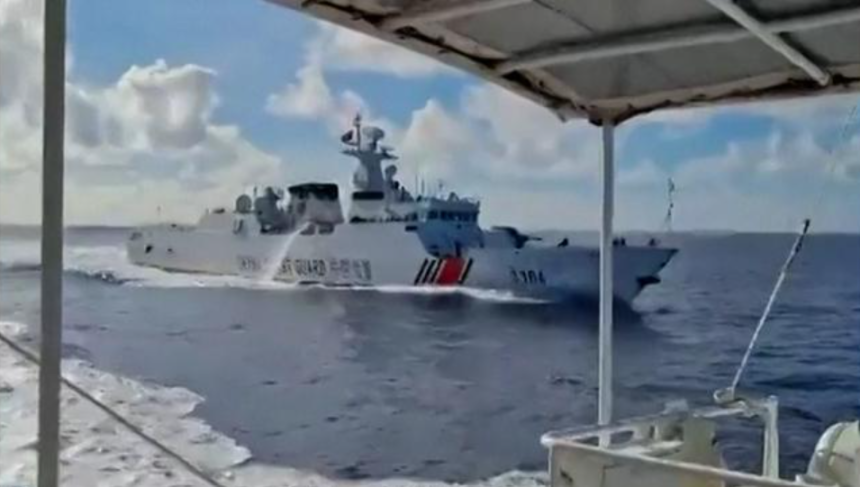Collision During the Chase
On August 11, 2025, two Chinese vessels—a China Coast Guard cutter (CCG 3104) and a People’s Liberation Army (PLA) Navy Type 052D destroyer designated Guilin—clashed after engaging in a high-speed pursuit of a Philippine Coast Guard paddle vessel, the BRP Suluan, near Scarborough Shoal in the South China Sea.
Philippine Supply Mission Under Threat
The incident occurred as the BRP Suluan and BRP Teresa Magbanua escorted fishing and supply boats to Filipino fishermen in the contested area. The Chinese vessels reportedly used aggressive maneuvers, including water cannon deployment, to disrupt the mission. The BRP Suluan managed to evade direct harm, continuing its humanitarian mission despite the interference.
Collision Details and Aftermath
During the chase, CCG 3104 executed a risky starboard-quarter maneuver that led to a T-bone collision with the larger Guilin destroyer. The coast guard ship’s bow suffered substantial crumpling, rendering it unseaworthy, while the navy vessel sustained visible dents and structural impact.
Offers of Assistance Declined
Following the collision, the Philippine Coast Guard radioed offers of aid and towing assistance. However, there was no response from the Chinese side, raising concerns about the wellbeing of any personnel aboard the damaged vessel.
Manila’s Strong Reaction
The Philippine government sharply condemned the incident, accusing Beijing’s vessels of executing “dangerous manoeuvres and unlawful interference”. Notification footage sparked international attention. Rear Admiral Roy Trinidad warned that such aggressive tactics indicate escalating tensions and could lead to further maritime flashpoints.
China’s Response: Denial and Sovereignty Assertion
China’s coast guard acknowledged the confrontation but did not confirm the collision. Spokesperson Gan Yu stated the CCG undertook “necessary measures” to expel Philippine vessels from what it deemed Chinese territory, reiterating Beijing’s stance on sovereignty and maritime law enforcement.
Regional Implications
The incident underscores a pattern of confrontations in the South China Sea, an area through which over 60% of global shipping passes. It further complicates the ongoing dispute between China and the Philippines, rooted in unresolved territorial claims and heightened by recent diplomatic friction—particularly over Taiwan.
This collision—between two units from the same country—reveals not just the peril of aggressive maneuvers in contested waters but also the potential for unintended escalation, even among allied forces. As tensions simmer, the risk of future incidents looms larger, demanding restraint and adherence to international maritime norms.











